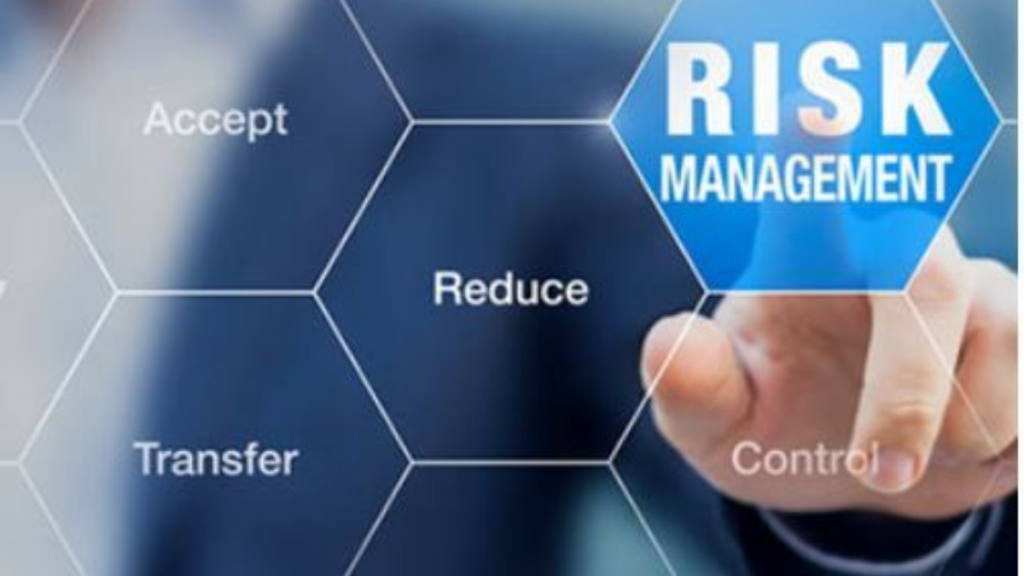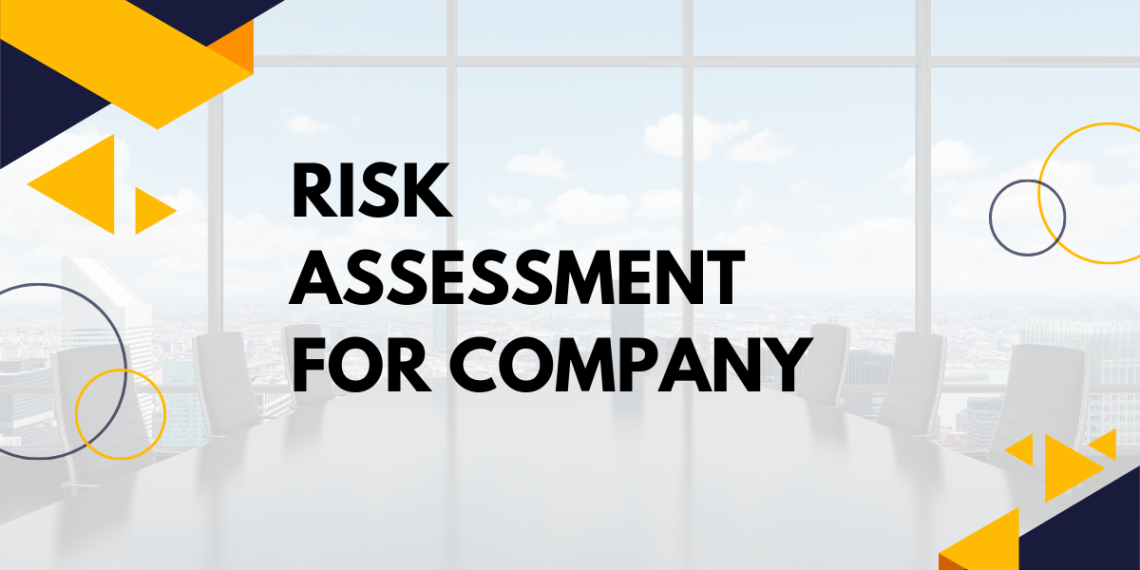Unlock the power of proactive planning as we guide you through the ins and outs of conducting a meticulous risk assessment for your company. Learn how to identify, evaluate, and mitigate potential threats to ensure the resilience of your business. Dive into practical steps and expert insights to fortify your strategic decision-making against unforeseen challenges.
Welcome to the world of proactive planning and strategic risk assessment for your company! In this post, we’ll break down the essentials in simple terms, starting with what risk assessment in businesses means.
Risk assessment is like a detective mission for your company. It’s about identifying potential problems that could wrench your plans. These problems could be lurking inside your company or sneaking in from the outside. Think of it as your business’s way of preparing for the unexpected.
Now, why should you care about all this risk assessment stuff? Well, it’s the secret sauce to proactive planning. Imagine sailing a ship without a map. Risk assessment is your navigation system, helping you steer clear of rough waters.
It’s about staying one step ahead, so when challenges pop up, you’re not caught off guard. Proactive planning is your shield against the unpredictable twists and turns of the business world.
The fundamentals of risk assessment for your company
Now that you’re on board with the idea of risk assessment, let’s dive into the nitty-gritty – the fundamentals that’ll make you the Sherlock Holmes of your company’s potential pitfalls.
- Identifying potential risks
- Categorizing risks
Identifying potential risks
Consider the following internal and external factors while doing risk assessment for your company
Internal factors
Think of your company like a big, bustling beehive. Internal factors are the bees inside – your employees, processes, and systems. Anything buzzing around in here that could sting your business success is an internal risk. It could be employee turnover, a glitch in your software, or even a disagreement among team members.
External factors
External factors are the weather outside your beehive – things you can’t control. This could be economic shifts, changes in laws, or sudden market trends. They’re the wild cards that, if not considered, might throw your hive into chaos. So, keep an eye on the weather forecast for your business world.
Categorizing risks
Categorize risk into the following:
Operational risks
Operational risks are the hiccups in your day-to-day operations. Picture this: your coffee machine breaks down, and suddenly the office is in chaos. That’s an operational risk. It’s the small stuff that can snowball if not handled pronto.
Financial risks
Money matters! Financial risks are like budgetary ninjas – unexpected expenses, market fluctuations, or payment delays. They can sneak up on you and throw your financial game off balance. Being financially fit means being ready for these unexpected surprises.
Strategic risks
Strategic risks are like the generals in your business war room. These are risks tied to big decisions – entering new markets, launching a game-changing product, or even mergers. They come with high stakes and can shape the destiny of your company.
Armed with this knowledge, you’re now equipped to identify and categorize risks like a pro. Stay tuned for the next steps in our journey to mastering proactive planning!

Conducting a thorough risk assessment for your company
Now that we’ve got our detective hats on, let’s get down to the action – how to conduct a risk assessment for your company. It’s like putting together the pieces of a puzzle, but instead of a picture, you’re creating a shield against potential business storms.
- Step-by-step guide
- Tools and methodologies
Step-by-step guide
Here’s the step-by-step guide you need to be able to make a careful risk assessment for your company:
Establishing objectives
First things first, set the game plan. What do you want to achieve with this risk assessment? Define your objectives clearly. It’s like deciding whether you’re playing chess for fun or aiming for a checkmate.
Identifying and analyzing risks
Time to put on your risk goggles. Look around your company, inside and out, and identify anything that could go sideways. It could be a leaky roof (literal or metaphorical) or a grumpy client. Once identified, analyze these risks – and understand their nature and potential impact.
Assessing impact and likelihood
Not all risks are created equal. Some are like little raindrops, and some are like thunderstorms. Assess the impact each risk could have and how likely it is to happen. This helps you focus on the heavy hitters and avoid getting bogged down by the drizzles.
Prioritizing risks
Time to make some tough choices. Not all risks can be tackled simultaneously. Prioritize based on severity and probability. This way, you’re dealing with the big bad wolves first and leaving the smaller challenges for later.
One other important thing to think about is, who is responsible for risk assessment. Think of risk assessment as a team sport. While it’s everyone’s game, there’s a captain – leadership. Yep, the big bosses play a crucial role. They set the tone, lead by example, and make risk-aware decisions.
But here’s the plot twist – it’s not just a top-down game. Every team member is a risk superhero. Whether you’re in marketing, IT, or the coffee corner, your radar matters. See a potential risk? Speak up. Your insights might be the game-changer.
So, while leadership steers the ship, the entire crew is on risk-watch duty. It’s like a potluck – everyone brings something to the risk-assessment feast. Because in business, we’re all in this together.
Tools and methodologies
There are so many tools you could be using for the analysis. It’s important to pick the right tools and methodologies for the risk assessment of your company.
SWOT analysis
SWOT – Strengths, Weaknesses, Opportunities, Threats. It’s like looking at your company in a mirror. What are you great at? Where do you stumble? What opportunities are knocking, and what threats are lurking? SWOT lays it all out on the table.
Risk matrix
Imagine a superhero ranking system. A risk matrix does just that. It helps you visualize and prioritize risks based on their impact and likelihood. So, you know which risks need your superhero attention ASAP.
Scenario analysis
Think of scenario analysis as playing chess in your mind. It’s anticipating moves and countermoves. Create ‘what if’ scenarios for potential risks. What happens if a key team member leaves? What if the market takes a nosedive? Being prepared with scenarios is your strategic advantage.
With this step-by-step guide and toolkit, you’re now armed to tackle risk assessment head-on. Stay tuned for the next chapter in our journey to proactive planning mastery!

Mitigation strategies of risk assessment for your company
Alright, risk busters, you’ve identified the threats – now it’s time to kick in the action plan. Mitigation strategies are your superhero cape, ready to swoop in and save the day.
- Developing risk mitigation plans
- Allocating resources effectively
- Agile Risk Mitigation: Your Game-Changer Strategy
Developing risk mitigation plans
Think of this like a playbook for your business. For each identified risk, create a mitigation plan. What’s the game plan if the internet crashes? Or if a key supplier pulls a disappearing act? Having a clear roadmap helps you navigate through the chaos.
Allocating resources effectively
Resources are your sidekicks in this adventure. Once you’ve got your plan, figure out what you need to make it work. Whether it’s extra cash, more manpower, or a secret stash of coffee for late-night strategy sessions – allocate wisely. Resources are your power-ups, so use them strategically.
Agile Risk Mitigation: Your Game-Changer Strategy
Ever played a video game? You adjust your strategy as the game evolves, right? The same applies to risk mitigation. Keep an eagle eye on your plan. Is it working? Do you need to tweak things? Maybe a new risk has popped up, and you need to pivot. Flexibility is your secret weapon.
Remember, mitigation isn’t a one-time deal. It’s an ongoing process. Your business landscape is ever-changing, like a plot twist in a movie. Stay vigilant and ready to adjust your strategies accordingly.
Mitigation is your chance to be the hero. Turn potential disasters into mere bumps in the road. So, suit up, strategize, and get ready to conquer the risks that come your way.
Stay tuned for more tips on mastering proactive planning. The journey to business resilience continues!
Integrating risk assessment for your company into decision-making
So, you’ve got your risk radar on, but what’s the point if you don’t use it to steer your ship, right? Let’s talk about how to blend risk assessment seamlessly into your decision-making process.
- Strategic decision-making with risk in mind
- Communicating risk across the organization
- Building a risk-aware culture
Strategic decision-making with risk in mind
Think of it like playing chess – every move has consequences. When making big decisions, keep your risk assessment notes handy. What risks could this decision unleash? What’s the worst that could happen, and how can you prepare for it? It’s like playing offense and defense simultaneously.
Communicating risks across the organization
Your team isn’t a bunch of mind-readers, right? So, spill the risk beans. Communicate the identified risks and your mitigation plans clearly. Use simple language, maybe even some visuals, so everyone’s on the same page. This way, it’s a team effort to dodge the business bullets.
Building a risk-aware culture
Imagine your company as a superhero league. Everyone needs to be a risk avenger. Encourage a culture where everyone’s eyes are on the lookout for potential risks. It’s not about being paranoid; it’s about being proactive. Train your team to spot risks, report them, and even come up with strategies to tackle them. It’s like having an army of risk superheroes!
Remember, risk awareness isn’t a one-time seminar. It’s an ongoing storyline. Keep the communication channels open, share stories of risks dodged, and celebrate the victories. Before you know it, risk assessment will be ingrained in your company’s DNA.
So, there you have it – integrating risk assessment into decision-making is like adding an extra layer of armor to your business strategy. Stay tuned for more tips on mastering proactive planning – the adventure continues!
Real-world examples of risk assessment
It’s time for some business storytelling – the real-life edition. Let’s dive into the tales of companies that aced risk assessment and those that stumbled. We’re talking about successes, failures, and the lessons we can snatch from both.
- Case studies of companies with successful risk assessment
- Lessons learned from failures in risk management
Case studies of companies with successful risk assessment
Meet the heroes of risk assessment! Take Company X, for instance. They spotted a market trend shift, adjusted their sails, and sailed right into profit island. How? They had a killer risk assessment plan. They anticipated changes, and when the storm hit, they were ready.
Then there’s Company Y – a master of people risks. They invested in employee well-being, and when a pandemic hit, they smoothly transitioned to remote work. The result? Happy, healthy employees and a business that didn’t skip a beat.
Lessons learned from failures in risk management
Let’s peek into the flip side – the cautionary tales. Company A ignored the warning signs, skipped the risk assessment step, and BAM! They faced a supply chain meltdown. Lesson? Ignoring risks doesn’t make them disappear; it just sets you up for a surprise ambush.
And then there’s Company B – the overconfident daredevil. They thought they were invincible until a tech glitch brought them down. Lesson? Even giants can stumble. Overlooking risks because you think you’re too big to fall is a recipe for disaster.
The takeaway? Learn from the successes and failures of others. Let these stories be your business fables. Be the hero, not the cautionary tale. Dive into the real-world adventures of risk assessment, and let’s craft a strategy that keeps your business thriving.

Proactive planning of risk assessment for business resilience
Think about turning risk assessment into a superpower for your business – making it not just a routine but a way of life.
- Aligning risk assessment with business goals
- Continuous improvement in risk management
- The role of leadership in proactive planning
Aligning risk assessment with business goals
Think of your business goals as the North Star. Your risk assessment should be the compass guiding you there. Every risk identified, every strategy crafted – they should all align with where you want your business spaceship to land. It’s not just about dodging asteroids; it’s about reaching new galaxies.
Continuous improvement in risk management
Proactive planning isn’t a one-and-done deal; it’s an evolving masterpiece. Treat your risk assessment like a garden – constantly tending to it, weeding out the bad stuff, and planting new seeds. Regularly revisit your strategies, update them, and stay one step ahead of the ever-changing business landscape. It’s the secret sauce for long-term resilience.
The role of leadership in proactive planning
Leaders, listen up – you’re the captain of this risk assessment ship. Your crew looks to you for guidance. Lead by example. Embrace risk awareness, communicate it to your team, and show them that proactive planning isn’t just a buzzword. It’s the compass (again!) that steers the entire organization.
Encourage a culture where every team member feels like a risk superhero. Foster an environment where ideas for improvement are celebrated, not feared. Your leadership sets the tone for the entire risk-resilient orchestra.
So, there you have it – proactive planning isn’t just a strategy; it’s a mindset. Align, evolve, and lead the charge. Stay tuned as we navigate through more waters of business resilience in our journey to mastering the art of proactive planning!
Conclusion
Alright, risk-tacklers, we’ve journeyed through proactive planning, turning risk assessment into your business sidekick. Quick recap: identify, analyze, and prioritize risks. Equip yourself with tools like SWOT and risk matrices.
Now, here’s your mission: implement proactive planning. Don’t let this be another bookmarked post. Take those first steps in risk assessment. Align it with your goals, keep improving, and leaders, lead the way!
Feeling overwhelmed? No worries. It’s like learning to ride a bike – a bit wobbly at first, but soon you’re cruising. Dive into a risk-aware culture, learn from real-world examples, and let those stories guide your strategy.
So grab your risk superhero cape and start your proactive planning adventure. Remember, it’s not about avoiding risks entirely; it’s about navigating them like a boss. The resilience of your business? That’s the prize at the end of this risk-aware rainbow. Go on, take that first step – your business future will thank you!






